 Edwin Vieira
Edwin Vieira
A short while ago, a friend of mine who is an ardent advocate in “social media” of the entire Second Amendment—including its first thirteen words, “[a] well regulated Militia, being necessary to the security of a free State”—related a verbal altercation he had with a proponent of the so-called “individual-right theory” of the Amendment, which focuses exclusively on its last fourteen words, “the right of the people to keep and bear Arms, shall not be infringed.” This fellow chided my friend on the grounds that, were “the right of the people to keep and bear Arms” tied in any manner whatsoever to the Militia, tens of millions of Americans now capable of exercising “the individual right” with respect to some (albeit not all) kinds of firearms could (and probably would) be denied a right to possess any firearms whatsoever, because they could (and probably would) be excluded from the Militia. Recognizing this complaint as the product of a variety of industrial-strength ignorance that afflicts all too many Americans today, I felt it incumbent upon me to post a rejoinder.
A. To put it most charitably, “the individual-right theory” of the Second Amendment is a linguistic and legalistic delusion of people who suffer from a peculiar sort of illiteracy. For, inasmuch as it derives from the last fourteen words of the Amendment, without reference to the first thirteen, it violates the fundamental—indeed, the very first—rule of constitutional law (as well as of English grammar), that all the words and phrases in each provision of the Constitution (or in an ordinary English sentence) must be construed together and interdependently, as a coherent whole.
Humans being the aggressively argumentative animals they are, it is surely possible for someone to contend that no inextricable relationship—whether linguistic, logical, or legal—should be taken to exist between the first thirteen words of the Second Amendment, on the one hand, and the last fourteen words, on the other. The plausibility of any such contention would be nil, however, inasmuch as it would compel the conclusion that America’s Founders were extraordinarily poor draftsmen (or perhaps that English was not their native language). Worse yet, to say (as my friend’s antagonist did) that the Amendment’s first thirteen words should not be considered at all, would defame the Founders as brainless bumpkins indeed. If one is entitled to deride Judge Harvey Wilkinson’s arrogantly asinine attribution of “profound ambiguities” to the Second Amendment in Kolbe v. Hogan, 849 F.3d 114, 150 (4th Cir. 2017) (concurring opinion), how much more should one ridicule the assertion of touts for “the individual-right theory” that the Second Amendment in its entirety is confused to the point of self-contradiction, and that only by editorially excising its first thirteen words can the recondite “true” meaning of the last fourteen be discovered and correctly applied? Confronted by such a claim, one is entitled to ask: “What ‘right to keep and bear arms’ is that, which is to be found, not by heeding all the words of the Constitution, but by disregarding some of them?”
Many Americans, however, are less interested in parsing the niceties of constitutional law and penetrating the arcana of history than in preventing the rude practicalities of modern-day “gun control” from being visited upon themselves. They are willing to swallow “the individual-right theory”—its intellectually indigestible horns, hide, and hooves included—because they assume that theory to be more useful to their goal of preserving for themselves an imaginary “right of the people to keep and bear Arms” under present political and social conditions than is the strictly constitutional construction of the Second Amendment which ties that “right” to “[a] well regulated Militia”. Having explored in great depth the historical foundations and legal intricacies of the Second Amendment in my book The Sword and Sovereignty: The Constitutional Principles of “the Militia of the Several States” (Front Royal, Virginia: CD-Rom Version, 2012), I need not rehearse here the constitutional conclusions laid out there. It would be useful, though, to compare and contrast the truncated fourteen-word version of the Second Amendment upon which “the individual-right theory” relies with the full twenty-seven word version of the Amendment which actually appears in the Constitution, so as to demonstrate in practical terms under which version Americans would be better off.
B. Because of such defective opinions as District of Columbia v. Heller, 554 U.S. 570 (2008), and McDonald v. City of Chicago, 561 U.S. 742 (2010), at the level of the Supreme Court the vaunted “individual right” of ordinary Americans “to keep and bear Arms” extends no farther than to certain types of handguns which some individuals may possess in their homes for purposes of personal self-defense. Not all firearms—and, presumably, not even all types of handguns—are the beneficiaries of Heller and McDonald. So at the very threshold “the individual-right theory” stumbles over the question of which “Arms” the Second Amendment protects.
Furthermore, the class of individuals protected in their possession of handguns under Heller and McDonald presumably does not include anyone less than twenty-one years of age. That number does not derive from the Constitution (quite the contrary), but instead from various “gun-control” statutes enacted by Congress and legislatures of the several States the legitimacy of which both Heller and McDonald took for granted. So, again at the very threshold, “the individual-right theory” stumbles over the question of which “people” the Second Amendment includes in “the right of the people to keep and bear Arms”.
Moreover, “the individual right” recognized in Heller and McDonald has not nullified numerous existing “gun-control” regulations of the United States and the several States (and even Localities) with respect to (i) what firearms and accessories individuals (of whatever ages) may or may not “keep” (such as so-called “assault firearms”, “machine guns”, “short-barreled” rifles and shotguns, “high-capacity magazines”, and so on), and (ii) where and how individuals (of whatever ages) may or may not “bear” such firearms as they happen lawfully to possess (such as in so-called “sensitive places”, whether by “open carry” or “concealed carry”, and so on).
Neither does “the individual right”preclude extensions of any existing regulations of firearms (other than those actually at issue in Heller and McDonald), or prohibit the enactment of new ones, by legislators. Nor does it disable judges from upholding old or new regulations on the basis that they satisfy so-called “strict scrutiny” (the “compelling governmental interest” and “least-restrictive alternative” tests), or some other even less demanding judicial excuses for abridging freedoms protected by the Bill of Rights (such as the theory of “reasonable regulation” advanced by Justice Breyer in his dissenting opinion in Heller). Certainly neither Heller nor McDonald has supplied an effective prophylactic against legislative enactment—and judicial approval—of all sorts of radical “gun-control” schemes in Massachusetts, New York, New Jersey, Maryland, and California (to name a few of the offending States) since those decisions were handed down.
To the contrary, the Supreme Court saw fit not to review the decision of the Court of Appeals for the Fourth Circuit in Kolbe v. Hogan, notwithstanding that Kolbe relied explicitly on Heller for its absurd ruling that so-called “assault rifles”, being akin to “weapons of war”, fall outside of the guarantee of the Second Amendment:
We conclude * * * that the banned assault weapons and large-capacity magazines are not protected by the Second Amendment. * * * [They] are among the arms that are “like” “M-16 rifles”—“weapons that are most useful in military service”—which the Heller Court singled out as being beyond the Second Amendment’s reach. * * * [W]e have no power to extend Second Amendment protection to the weapons of war that the Heller decision explicitly excluded from such coverage. [849 F.3d at 121.]
As much as one may justifiably guffaw at Judge Wilkinson who claimed to discern “profound ambiguities” in the Second Amendment, and as much as one may righteously denounce for plain dishonesty the majority of Judges in Kolbe who seized upon irresponsible dicta in Heller to serve their nefarious purpose, at the end of the day one must lay this pernicious result at Heller’s door—at the doors of the people who “successfully” litigated that case—at the doors of those who subsequently treated (and still treat) Heller as the Holy Grail of Second-Amendment jurisprudence, rather than as the kiss of Judas which it actually is—and especially at the doors of the Justices of the Supreme Court who let Kolbe stand. Although a minority of the Court is capable of granting a petition for a writ of certiorari, not even four Justices could muster the courage, the conviction, yea the common courtesy to their country to stand up for the Court’s own “landmark” decision in Heller when it was so callously and cynically perverted. This alone proves how worthless “the individual right” is as a guarantor of anything, when its own judicial creator suffers it to be so crudely prostituted before the eyes of the entire world. Worse yet, one can expect Kolbe’s reasoning, and the Supreme Court’s retreat, to embolden “gun-control” fanatics to urge upon legislatures and lower courts throughout the United States the notion that every firearm which ever has been or ever could be employed as a “weapon of war”—whether in conventional warfare, guerrilla warfare, partisan warfare, and so on—is, by dint of that description alone, excluded from the protection of the Second Amendment.
No less is one entitled to ask whether “the individual-right theory” has proven any more efficacious outside the lairs of rogue legislators and lower-court judges than within them. The answer, of course, is “no”. For the most notorious recent example, did that theory preclude the BATFE’s pernicious, and plainly unconstitutional, misconstruction of the National Firearms Act of 1934, which imposed a ban on so-called “bump stocks” by falsely assimilating such devices to actual “machine guns”? And did not President Trump himself—whose candidacy was promoted and whose incumbency has been praised by that champion of “the individual-right theory”, the NRA—propose, egg on, and approve the BATFE’s action, “the individual right” be damned? And what of “red-flag laws” which muster anonymous accusers—along with police, prosecutors, and judges playing at pop-psychology—to violate not only the Second Amendment but also the First, Fourth, Fifth, and Fourteenth Amendments? What effect will “the individual right” have on these enactments? The all-too-predictable answer is “none”.
“The individual-right theory” has not disabled, it has not deterred, it has not discouraged—in fact, it has encouraged and even facilitated—“gun-control” fanatics in legislatures, courts, the mass media, and subversive special-interest groups in their jihad aimed at forcibly disarming as many ordinary Americans as possible, of as many firearms as possible, in as many places as possible, as soon as possible, for as many reasons as possible—while affording the victims of this aggression as little recourse as possible. Indeed, “the individual-right theory” is of inestimable propagandistic value to “gun controllers”, precisely because by its own terms it juxtaposes the right of a selfish individual to act in his own personal interest against the power and duty of a benevolent government to act altruistically in the public interest. On the basis of that politically loaded dichotomy, “gun controllers” can claim in the name of “common sense” that “the individual right” must be subjected to judicial “balancing tests” and other arguments sounding in “reasonable regulation” predicated on the “findings” of modern practitioners of “sociological jurisprudence” and other pseudo-intellectual mumbo jumbo peddled by Cultural Marxists. Not surprisingly, then, the most “progressive” contemporary “gun controllers” are ranging far beyond traditional proposals for ad hoc regulation of firearms to demand instead the systematic elimination of private possession of most if not all firearms, based on some politicians’ or special-interest groups’ tendentious notions of ordinary Americans’ lack of any “need” to possess this or that type of firearm (in particular, “assault rifles”); on the peculiar “danger” to the public which some types of firearms supposedly pose in private hands (such as mass shootings perpetrated with semi-automatic pistols and rifles equipped with “high-capacity magazines”); on the number of deaths per annum which can be attributed to firearms in general (the actual circumstances of those fatalities conveniently left unconsidered); on whether a firearm can be defamed as an “assault rifle” or “weapon of war”, or demonized with some other bad name (as if constitutional rights turned on mere labels); and so on.
For example, if the “gun controllers’” “compelling governmental interest” were to prevent homicides effected with firearms in the hands of private citizens to the greatest degree possible (a goal the importance of which no one would gainsay in principle), a plausible “least-restrictive alternative” that preserved a “right” (perhaps only vestigial in substance, but a “right” in form nonetheless) for individuals to employ firearms for target-shooting, hunting, and other governmentally approved “sporting purposes” would be for all privately owned firearms and ammunition to be kept in governmentally supervised arsenals to be withdrawn only for those uses at specified locations and times by individuals who had passed suitably comprehensive “background checks” immediately prior to being allowed access to those arms. As for personal protection, ordinary citizens could depend on Local police, or on private security firms properly licensed and regulated by the government, just as do large numbers of people who choose not to be armed today, or who live in jurisdictions in which the laws prevent them from being armed. As draconian as this may appear to be, it preserves the appearances of judicial “strict scrutiny” which most proponents of “the individual-right theory” not only accept as legitimate but even themselves attempt at every opportunity to importune the courts to apply to the latest “gun-control” scheme.
An additional demerit of “the individual-right theory” is that it concerns itself exclusively with the claim of an individual simply to possess his own firearm. But because one’s mere possession of a firearm does not guarantee his proficiency with it, “the individual right” does not even pretend to insure that someone who possesses a firearm will train, or be trained, sufficiently in its use, even for personal protection in his own home (let alone on the street). This fuels the fire of “gun controllers’” propaganda that many, if not most, ordinary Americans who possess firearms are ignorant red necks or incompetent bozos who—because of their deplorable lack of the knowledge, skills, and attitudes requisite for the safe handling of arms—pose significant dangers to themselves as well as to others.
Moreover, by the implication of its own terms, “the individual right” neither requires nor even encourages an individual to prepare—along with members of his own family, neighbors, and other Local citizens—to engage in concerted action with firearms should that become necessary for the defense of their community against (say) criminal gangs. Of course, advocates of “the individual right” such as the NRA promote the exalted notion that each armed American is a brick in a bulwark raised up against usurpation, oppression, and tyranny at the hands of the worst of all criminals, rogue public officials. A patriot’s beautiful dream, this, to be sure. But a realist recognizes it as a cruel delusion. Being a thoroughly individualistic conception predicated exclusively on the last fourteen words of the Second Amendment, “the individual right” has, and can have, nothing to do with the kind of collective action by ordinary Americans with respect to firearms to which the Amendment’s first thirteen words refer—that is, providing “security” for “a free State” through the “necessary” efforts of “well regulated Militia”.
The history of tyrannies in one country after another during modern times is a collection of horrific facts. In contrast, that Americans exercising “the individual right to keep and bear arms” in mutual isolation could forefend the advent of tyranny in this country, let alone fight off a tyranny once ensconced in power, is a childish fantasy. Usurpation does not give birth to oppression, and oppression mature into tyranny, unless the aspiring usurpers, oppressors, and tyrants can call upon well-armed, -organized, and -trained contingents of myrmidons to stifle public criticism of, frighten political opposition to, and put down actual physical resistance against their rule. So, even with an AR-15 rifle and several thousand rounds of ammunition loaded into 30-round magazines at his side, a lone individual cowering in his cellar cannot hope, solely through his own actions, to defeat the forces of any tyranny worthy of that name. He cannot hope even to defend himself against it for any appreciable length of time. And therefore he cannot reasonably expect to deter it from attacking, enslaving, or murdering him or anyone else.
In sum—
- “The individual-right theory” is illiterate, illogical, and illegitimate, because it disregards the first thirteen words of the Second Amendment (a fatal demerit in constitutional analysis).
- “The individual-right theory” radically contracts the scope of the “Arms” the Second Amendment protects, because “the right of the people to keep and bear Arms” which it posits is independent of any relationship between those “Arms” and “[a] well regulated Militia”. If the “Arms” at issue were those suitable for any conceivable type of service in the Militia, it would be impossible to identify any “Arms” the Second Amendment would not protect. But if (according to “the individual-right theory”) the “Arms” at issue are only those suitable for personal protection by an isolated individual, then the Amendment can protect only those “Arms” which such an individual reasonably needs for that purpose under the particular circumstances confronting him—which is a matter, not of straightforward and intelligible constitutional principle, but of conjecture, controversy, and the frothy crappuccino ladled out by “gun-control” fanatics.
- “The individual-right theory” acquiesces in unconstitutional limitations on which “people” may exercise “the right * * * to keep and bear Arms”—denying those “people” sixteen and seventeen years of age a right to possess either handguns or long guns, and those “people” eighteen through twenty years of age a right to possess handguns.
- “The individual-right theory” exposes ordinary Americans to perpetual legislative, judicial, and executive harassment by “gun controllers”, because it pits the mere private interests of individuals against the public interest the government serves—and in this contest the government always has the final say. Experience teaches that “the individual-right theory” cannot prevent “gun control” from being imposed throughout this country step by step, because “gun controllers” will always be able—in the future as they have been in the past—to conjure some “compelling governmental interest” which their latest “reasonable regulation” serves, and to convince the courts that “common sense” commends that “regulation” as imposing “the least-restrictive alternative” on the individuals being “regulated”.
- “The individual-right theory” deludes ordinary Americans into imagining that, with respect to firearms, individual action is sufficient, collective action unnecessary—when, as history repetitively evidences, only collective action offers any hope of successful deterrence, let alone resistance, against usurpers, oppressors, and tyrants. By inducing inactivity this mental intoxication is particularly pernicious, because in the realm of politics evildoers never sleep, but good men all too often do.
- Finally, “the individual right” is a right of an ordinary private citizen, asserting personal interests, not a right of a member of a governmental establishment, exercising governmental authority. This enables “gun controllers” to portray “gun control” as a policy proposed in the public interest, and to berate those Americans who oppose “gun control” as “anti-government extremists” acting against the general welfare.
C. The true “right of the people to keep and bear Arms” is to be found in two places: First, in the full wording of the Second Amendment. The overarching goal of the Amendment is to guarantee the survival of “a free State”. This requires the provision of “security”. “[N]ecessary to the security of a free State” is “[a] well regulated Militia”. And to ensure that “[a] well regulated Militia” always exists in every “free State” in the Union, “the right of the people to keep and bear Arms, shall not be infringed”. The obvious, unavoidable, conclusion is that the purpose of “the right of the people to keep and bear Arms” is to guarantee that “the people” will always be capable of serving in —and therefore of always having at their own disposal—“well regulated Militia”, through which they themselves can provide “the security of a free State”.
Second, constitutional exegesis should not stop with the obvious. For the Second Amendment does not stand alone. It relates directly to provisions in the original Constitution which also deal with “the right of the people to keep and bear Arms”.
To ensure that public officials would always adhere to the correct construction of the original Constitution, the Bill of Rights, consisting of “further declaratory and restrictive clauses”, was grafted onto the Constitution “in order to prevent misconstruction or abuse of its powers”. Resolution of the First Congress Submitting Twelve Amendments to the Constitution (4 March 1789), in Documents Illustrative of the Formation of the Union of the American States, House Document No. 398, 69th Congress, 1st Session (Washington, D.C.: Government Printing Office, 1927), at 1063. Now, obviously, a “misconstruction * * * of [the] powers” which the original Constitution delegated to the General Government would involve a misreading, misinterpretation, or mistaken application of those “powers”—stemming, presumably, from an inadvertent and honest misunderstanding of some sort. Conversely, an “abuse of [the original Constitution’s] powers” would involve an intentional and dishonest extension (or perhaps an intentional and dishonest contraction) of those “powers” in derogation of their legitimate purpose and scope. In either case, the Bill of Rights was adopted, not on the premiss that the various actions which its Articles discountenanced were actually permitted by the original Constitution, but rather to ensure that the correct construction of the Constitution—which disallowed those actions in the first place—would be pellucid. Indeed, that the Bill of Rights added “further declaratory and restrictive clauses” plainly indicated that the original Constitution already contained some “declaratory and restrictive clauses” (whether express or implied) with respect to the subjects the Bill of Rights addressed. In this regard, Alexander Hamilton was correct to write that “the Constitution is itself, in every rational sense, and to every useful purpose, a BILL OF RIGHTS”. The Federalist No. 84.
Plainly enough, as its reference to “well regulated Militia” proves, the Second Amendment contains “further declaratory and restrictive clauses” which were added to the original Constitution “in order to prevent misconstruction or abuse of its powers” with respect to the Militia—namely, Article I, Section 8, Clauses 15 and 16; and Article II, Section 2, Clause 1. According to the logic of the Bill of Rights, if these powers were always properly construed and applied by Congress, the President, and the States, Americans would not need the Second Amendment. But because the enemies of “a free State” are always at work undermining its foundations, the Second Amendment exists to ensure that these powers will be so construed and applied no matter what.
Of no small moment is that “the individual-right theory” cannot point to any sentence, clause, or word in the original Constitution which might plausibly need the Second Amendment “in order to prevent misconstruction or abuse of [that sentence’s, clause’s, or word’s] power[ ]” with respect to personal self-defense. As the Founders well knew, “[s]elf defence * * * , as it is justly called the primary law of nature, so it is not, neither can it be in fact, taken away by the law of society.” William Blackstone, Commentaries on the Laws of England (Philadelphia, Pennsylvania: Robert Bell, American Edition, 4 Volumes & Appendix, 1771-1773), Volume 3, at 4. There being no imaginable provision of the Constitution which by any “misconstruction or abuse” could purport to “take[ ] away” “the primary law of nature” which cannot be “taken away by the law of society”, there could be no need for an article in the Bill of Rights to prevent such an impossible “misconstruction or abuse”. Thus, the very purpose of the Bill of Rights excludes “the individual-right theory” as an arguable exegesis of the Second Amendment.
As an aside, it is more than merely arguable that the Ninth Amendment protects “the individual right” to keep and bear arms for personal self-defense under some circumstances. The Ninth Amendment provides that “[t]he enumeration in the Constitution, of certain rights, shall not be construed to deny or disparage others retained by the people.” Plainly, no provision in the original Constitution relates to (let alone enumerates) the right of personal self-defense, Therefore, the Ninth Amendment would not be necessary “in order to prevent misconstruction or abuse of [some nonexistent] power[ ]” relevant thereto. But it would be useful to establish that, notwithstanding the original Constitution’s silence on the subject of personal self-defense, “the people” retain that right in general, in addition to a specific right to employ for that purpose the “Arms” they possess for Militia service.
In any event, anyone who has perused The Sword and Sovereignty or has carefully studied the matter in some other manner understands what “the Militia of the several States” were when the original Constitution incorporated them as such as permanent institutions of government within its federal system in Article I, Section 8, Clauses 15 and 16, and in Article II, Section 2, Clause 1. Similarly, every such person understands what the power delegated to Congress “[t]o provide for organizing, arming, and disciplining, the Militia” entailed at that time (Article I, Section 8, Clause 16). Furthermore, every such person understands that the States retained their own powers “[t]o provide for organizing, arming, and disciplining, the[ir own] Militia”, because the Militia are “the Militia of the several States” (that is, separate governmental establishments of and within each of the States), not “the Militia of the United States”. That is, “Militia” in the original Constitution is a plural not a singular noun. Moreover, every such person understands that the powers the original Constitution delegated to Congress, and reserved for the States, were then (and are now) simultaneously duties. For “[w]hatever functions Congress are by the Constitution authorized to perform they are, when the public good requires it, bound to perform”. United States v. Marigold, 50 U.S. (9 Howard) 560, 567 (1850). And even beyond the application of this general principle to the States, just as it does today the Supremacy Clause of the original Constitution (Article VI, Clause 2) disabled them from so disorganizing, disarming, or impairing the discipline of their Militia that the latter would be incapable of being “call[ed] forth [by Congress] to execute the Laws of the Union, suppress Insurrections and repel Invasions” (Article I, Section 8, Clause 15), or of being deployed by the States themselves for the States’ own purposes beyond what the Constitution allows for Congress, such as “engag[ing] in War” when “actually invaded, or in such imminent Danger as will not admit of delay”, which the States may do “without the Consent of Congress” (Article I, Section 10, Clause 3).
Any student of this matter also knows that, from their inceptions in Colonial times, “the Militia of the several States” were institutions memberships in which were compulsory—that is, every individual eligible for service in the Militia was under a legal duty to serve. And for every such individual the duty to serve necessarily implied a corresponding right to serve as against anyone who might attempt to interfere with the performance of that duty. Inasmuch as everyone in the Militia (other than conscientious objectors) was required to acquire and possess throughout his time in service one or more firearms, suitable ammunition, and various accouterments, the duty to serve encompassed an absolute “right * * * to keep and bear Arms” of no less longevity. No “compelling governmental interest” could ever have interfered with that right, because service in the Militia was itself the highest of all “compelling governmental interest[s]”, being “necessary to the security of a free State”. In contrast, although “the individual-right theory” does promote a right to acquire and possess firearms, it does not impose, suggest, or even pose the possibility of a duty to do so. Neither does “the individual-right theory” require or encourage anyone to acquire a firearm for the specific purpose of serving in “[a] well regulated Militia”. Indeed, almost all of the proponents of “the individual-right theory” recoil from the word “militia” with the terror that garlic inspires in vampires.
Because the original Constitution incorporated “the Militia of the several States” as such as permanent institutions of government within its federal system (in Article I, Section 8, Clauses 15 and 16, and in Article II, Section 2, Clause 1), neither the States, nor Congress, nor the President, and certainly not the Judiciary, can dispense or interfere with them. In particular, because no “unarmed Militia” or “disarmed Militia” ever existed, or were ever even contemplated, in American pre-constitutional history, there can be no “gun control” of the modern sort which could injuriously affect the Militia, or any members thereof. To the contrary: Where the Militia are concerned, “gun control” involves the provision of firearms to everyone (other than conscientious objectors), not the withholding of as many firearms from as many ordinary Americans as quickly as possible, which is the ulterior, and often even the announced, goal of all contemporary “gun-control” fanatics.
The Constitution delegates to Congress the power “[t]o provide for * * * arming * * * the Militia” in order to enable them to be “call[ed] forth to execute the Laws of the Union, suppress Insurrections and repel Invasions” (Article I, Section 8, Clauses 16 and 15)—not “[t]o provide [against] * * * arming * * * the Militia”, or “[t]o provide for * * * [dis]arming” them, so that those purposes cannot be served. Congress cannot disarm the Militia of the several States, because the Militia must be armed by the States or by the members of the Militia themselves (if Congress does not “provide for * * * arming” them), so as always to be ready to perform, not only those three constitutional functions, but also whatever functions their States may require of them (with which Congress generally nothing to do). The States cannot disarm their own Militia, not only because there are no such things as “disarmed Militia”, but also because disarming their Militia would unconstitutionally interfere with the powers, duties, and rights of Congress to arm the selfsame Militia and to call those armed Militia forth. Moreover, in general, for any State to disarm her Militia would leave the people of that State incapable of providing “the security of a free State” within their State, because the “necessary” means—“[a] well regulated Militia”—would not exist. In particular, such a State would disable herself from “engag[ing] in War” even when “actually invaded, or in such imminent Danger as will not admit of delay” (Article I, Section 10, Clause 3), a consequence the absurdity of which needs only to be enunciated to be appreciated.
Beyond this, the Declaration of Independence asserts that, “when a long train of abuses and usurpations, pursuing invariably the same Object evinces a design to reduce the[ People] under absolute Despotism, it is their right, it is their duty, to throw off such Government, and to provide new Guards for their future security.” In practice, however, the people could never enforce this “right” and fulfill this “duty” unless they were, not simply armed as isolated individuals, but instead armed, organized, trained, and disciplined collectively in appropriate Militia units infused with governmental authority as manifestations of the people’s sovereignty. So, unless Americans are ready to dismiss the Declaration of Independence as a childish fantasy, they must demand—and against any and all opposition must enforce their demand—that the Militia always be armed.
Because the Militia must be armed, the people who serve in the Militia must be armed. But who are those people? Everyone familiar with the pre-constitutional Militia—that is, the Militia incorporated into the original Constitution as “the Militia of the several States”—knows that, in general, all free males from 16 upwards to 45, 50, 55, or even 60 years of age (excluding those who were severely physically disabled, who were mentally defective, or in some cases who had been convicted of serious criminal offenses) were required to enroll in the Militia. The lower age-limit turned on the idea that a sixteen-year-old was sufficiently mature to be expected to participate in protection of the community. The upper limit (actually, an exemption rather than an exclusion) turned on the reality that in those days most superannuated individuals suffered from illnesses or disabilities beyond treatment or correction, which excused them from trying to fulfill the para-military duties the Militia typically performed. Although at some point compelled today by the constitutional consideration that one cannot be required to serve if he is simply unable to do so, the upper age-limit remains subject to statutory adjustment, just as it was in pre-constitutional times, on the basis of practicality. Today, however, society having advanced in complexity, the Militia would be responsible for many more functions than they were in the Founding Era, functions which could easily be performed by elderly or partially disabled individuals, especially where technical expertise acquired over a lifetime were required. Thus, the people who would exercise “the right * * * to keep and bear Arms” in the Militia would include those from 16 years of age to those just under the age at which they were more or less incapable of “keep[ing] and bear[ing] Arms” at all. Women having been legally emancipated since the Founding Era, this set would include them as well, under conditions appropriately tailored to their peculiar needs.
Analysis must now turn to the question of what sort of “Arms” people enrolled in the Militia would have the right, and the duty, “to keep and bear”. Although many vocal proponents of “the individual-right theory” claim that the Second Amendment entitles all law-abiding individuals “to keep and bear Arms”—or at least firearms—of all sorts, that theory itself advances no objective standard in this regard. Rather, it loosely refers to “Arms” which an ordinary individual, under circumstances typical in contemporary society, would be likely to have at hand to use for personal self-defense. (That, after all, is the gist of the Heller decision, at least as far as some handguns are concerned.) All of these matters, of course, are subject to sufficient doubt, debate, disagreement, and dissension to foster arguments that some “compelling governmental interests” exist for banning this or that type of firearm, or even all firearms, from private citizens’ possession. Indeed, “the individual-right theory” has not prevented lower courts from venturing even more deeply into the thickets of judicial absurdity, to rule that broad categories of “Arms” which undoubtedly could be used for self-defense are not protected by the Second Amendment at all—in particular, as in the Kolbe case, so-called “assault firearms” (such as AR-15 rifles) which the Judges denounced as akin to “weapons of war”.
How does this compare to the “Arms” people enrolled in the Militia would be, not only entitled, but also required by law, “to keep and bear”? Other than conscientious objectors, everyone enrolled in the Militia would be obliged to possess firearms suitable for the various types of Militia duty he (or she) might perform. For just about all persons not suffering from a disqualifying physical disability, this would mandate possession of at least one military-grade “assault rifle” and a military- or police-grade semiautomatic pistol (with ammunition and various accessories). Not Heller, not McDonald, but United States v. Miller provides the applicable principle: A firearm comes within the ken of the Second Amendment if “at this time [it] has some reasonable relationship to the preservation or efficiency of a well regulated militia”, such that “this weapon is part of the ordinary military equipment or that its use could contribute to the common defense.” 307 U.S. 174, 179 (1937). So, contrary to the Judges who mangled Kolbe, “weapons of war” form the very first rank of the “Arms” which the Second Amendment protects—which should be obvious (even to those Judges) simply from the constitutional authority and responsibility of the Militia to “repel Invasions” (Article I, Section 8, Clause 15). Actually, each member of the Militia could—and would be encouraged to—acquire in the free market as many firearms of as many types as might be useful for any and every sort of Militia service to which that individual might be assigned by specific orders or in which he might be caught up through adventitious circumstances. That being the case, it would be impossible to imagine any working firearm which could not be included in this set of “Arms”. That, of course, is not the case where “the individual right” is under scrutiny—to which any American who cannot easily acquire an automatic rifle (or even a silly “bump stock”) in the open market will attest.
“The individual-right theory” is also defective because, by its own terms, it applies only to private citizens acting as such, with only the rights, powers, privileges, and immunities which pertain to such individuals. In contrast, at all times individuals enrolled in the Militia are members of governmental institutions—“the Militia of the several States”—exercising the rights, powers, privileges, and immunities which pertain to those institutions. And at some times members of “the Militia of the several States” may be “call[ed] forth to execute the Laws of the Union, suppress Insurrections and repel Invasions” in “the actual Service of the United States” (Article I, Section 8, Clause 15, and Article II, Section 2, Clause 1)—then to exercise the rights, powers, privileges, and immunities which pertain to persons “employed in the Service of the United States” (Article I, Section 8, Clause 16). Thus, where the Militia are concerned, no dichotomy or disjunction exists between mere “private citizens” and “the government”. The Militia are components of the governments of each of the several States all of the time and of the United States some of the time. At no time are they not governmental entities. So individual members of the Militia are always public officials, because within the Militia they exercise public authority for public purposes—indeed, for the most important public purpose of all, because the highest statement of public authority (the Constitution itself) deems them “necessary to the security of a free State”.
Champions of “the individual-right theory” will doubtlessly complain that law-abiding individuals not enrolled in the Militia will not be assured of a “right * * * to keep and bear Arms”. This fear is wildly overblown. To be sure, some individuals not subject to enrollment in the Militia will not be assured of that right—and rightly so. Those who, being less than 16 years of age, are too young to serve in the Militia can claim no “individual right” with respect to firearms today. No responsible person advocates allowing children to purchase firearms on their own accounts, or to possess firearms even for legitimate uses, without close parental or other adult supervision. On the other hand, individuals who became too old or too infirm to continue to serve in the Militia could not be dispossessed of the firearms they had acquired when enrolled in the Militia, because these are their own private property subject to the general constitutional protections of Due Process (Fifth and Fourteenth Amendments). And the very few individuals who for some innocent reasons were never eligible for service in the Militia could not be prohibited from acquiring firearms suitable for purposes of self-defense (Ninth Amendment).
It should be obvious, too, that the absolute “right of the people to keep and bear Arms” in order to facilitate their service in the Militia is perfectly compatible with—indeed, is the very best way to effectuate—“the individual right” “to keep and bear Arms” for personal self-defense. Americans today should be as well aware as were the Founders in their own time that self-defense constitutes execution of “the primary law of nature”. The law of society “considers that the future process of law is by no means an adequate remedy for injuries accompanied with force; since it is impossible to say, to what wanton lengths of rapine or cruelty outrages of this sort would be carried, unless it were permitted a man immediately to oppose one violence with another.” William Blackstone, Commentaries on the Laws of England (Philadelphia, Pennsylvania: Robert Bell, American Edition, 4 Volumes & Appendix, 1771-1773), Volume 3, at 4. So self-defense is, at its very foundation, a Militia function: namely, the execution of “the primary law of nature” when no law of society can be brought to bear to prevent some irremediable harm. And, self-evidently, as a practical matter everyone who is required to possess firearms suitable for Militia service can also employ those firearms for self-protection (or the protection of others) should the need arise. Thus considered in the correct constitutional context, “the individual right” of self-defense becomes inseparable from Americans’ rights and duties pertaining to the Militia. Moreover, as an aspect of executing the law, self-defense implies an absolute right derived from service in the Militia “to keep and bear Arms” useful for that purpose—which “Arms” will inevitably include numerous types of firearms perfectly adequate for self-defense even if not usually deemed suitable for “execut[ing other] Laws”, “suppress[ing] Insurrections”, or “repel[ling] Invasions” (Article I, Section 8, Clause 15).
For this commentary to go further than it has would bring owls to Athens. It is enough to ask which the reader would have: the illlogical mish-mash which “the individual-right theory” imposes upon a truncated Second Amendment of only fourteen words; or the coherent construction of that Amendment which reliance on all of its twenty-seven words makes possible? The choice is yours. I, however, am under the distinct impression that the exponents of “the individual-right theory” will cling to it no matter what. The reason is subject to conjecture: ignorance, willful blindness, reckless disregard of the facts, a stubborn refusal to admit error? What difference, though, can the reason make now? “No matter what” will all too soon be upon us. Give the “gun-control” fanatics their heads in the 2020 elections, and they will destroy this country in very short order, as sure as shooting. And “the individual-right theory” of the Second Amendment will do nothing to stop them.
© 2019 Edwin Vieira – All Rights Reserved
E-Mail Edwin Vieira: edwinvieira@gmail.com


 President Trump’s personal assistant, Madeleine Westerhout, resigned Thursday, August 29th, amid tensions. Trump reportedly discovered that Westerhout shared private details about his family and White House operations. The exchange took place at a recent off-the-record dinner with reporters, per Axios’ Jonathan Swan, and the information got back to the White House. “The breach of trust meant immediate action,” per the NYT, adding Westerhout, who has been with Trump since the first day of his presidency, was immediately deemed a “separated worker.”
President Trump’s personal assistant, Madeleine Westerhout, resigned Thursday, August 29th, amid tensions. Trump reportedly discovered that Westerhout shared private details about his family and White House operations. The exchange took place at a recent off-the-record dinner with reporters, per Axios’ Jonathan Swan, and the information got back to the White House. “The breach of trust meant immediate action,” per the NYT, adding Westerhout, who has been with Trump since the first day of his presidency, was immediately deemed a “separated worker.” Governor Michael Pence was chosen as Trump’s Vice President because he needed a man who knew the people in Congress and could help him pass legislation. Allegedly, for this reason, he was Ivanka Trump’s choice. Pence had served 12 years in Congress and was longtime friends with Paul Ryan, and John McCain who he endorsed for election prior to Trump’s support. His other close friend who retired was Jeff Flake. After his stint in Congress, Pence ran for Governor of the State of Indiana.
Governor Michael Pence was chosen as Trump’s Vice President because he needed a man who knew the people in Congress and could help him pass legislation. Allegedly, for this reason, he was Ivanka Trump’s choice. Pence had served 12 years in Congress and was longtime friends with Paul Ryan, and John McCain who he endorsed for election prior to Trump’s support. His other close friend who retired was Jeff Flake. After his stint in Congress, Pence ran for Governor of the State of Indiana.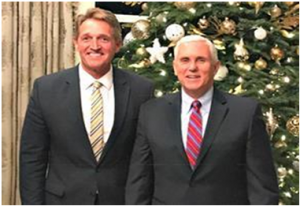 In a previous article,
In a previous article, 
 “Whoever, having knowledge of the actual commission of a
“Whoever, having knowledge of the actual commission of a  Pardon my French…but what in the Hell is going on in America? Is there any chance of rescuing this nation if we all simply ignore the law? Would you be free if you did what Hillary did? Doesn’t that bother you? Don’t you think that WE THE PEOPLE should DEMAND JUSTICE?
Pardon my French…but what in the Hell is going on in America? Is there any chance of rescuing this nation if we all simply ignore the law? Would you be free if you did what Hillary did? Doesn’t that bother you? Don’t you think that WE THE PEOPLE should DEMAND JUSTICE? But the destruction or perversion of societal norms is not all that leads to irreconcilable differences. Moving away from the foundation of our liberties is the prime reason for the widening gap on how America should be governed. Here, in a few lines, are two opposing descriptions of how government should operate, from totally different perspectives:
But the destruction or perversion of societal norms is not all that leads to irreconcilable differences. Moving away from the foundation of our liberties is the prime reason for the widening gap on how America should be governed. Here, in a few lines, are two opposing descriptions of how government should operate, from totally different perspectives: By Greg Holt
By Greg Holt By J. D. Pendry
By J. D. Pendry By Michael LeMieux
By Michael LeMieux By: Devvy
By: Devvy Frosty Wooldridge
Frosty Wooldridge (Four kids in a country town walking down the street. How will their life histories turn out? Will they live lives worth remembering?) Photography by Frosty Wooldridge
(Four kids in a country town walking down the street. How will their life histories turn out? Will they live lives worth remembering?) Photography by Frosty Wooldridge Amil Imani
Amil Imani Mother kept telling me that this is not the same Iran you left. This is a different Iran. She also warned me if I went back, the Islamic regime would immediately recruit me and send me to the front lines. The same war zone that took the lives of many of my school friends. It was a terrifying feeling. Now adrenalin was rushing through my veins and fighting an enemy was all I could think of. I said, Mom, my friends lost their lives to defend their country. I find it my duty to come home and do the same. Please say no more. To no avail, she kept begging me not to come back and wait until the war ended. She continued, the Khomeini’s regime doesn’t care about Iran, or the lives of Iranians. In fact, he despises Iran. She convinced me that I could do more for Iran in a free US than a war zone where I would most likely not survive. I listened to her motherly advice and stayed while continuing with my higher education.
Mother kept telling me that this is not the same Iran you left. This is a different Iran. She also warned me if I went back, the Islamic regime would immediately recruit me and send me to the front lines. The same war zone that took the lives of many of my school friends. It was a terrifying feeling. Now adrenalin was rushing through my veins and fighting an enemy was all I could think of. I said, Mom, my friends lost their lives to defend their country. I find it my duty to come home and do the same. Please say no more. To no avail, she kept begging me not to come back and wait until the war ended. She continued, the Khomeini’s regime doesn’t care about Iran, or the lives of Iranians. In fact, he despises Iran. She convinced me that I could do more for Iran in a free US than a war zone where I would most likely not survive. I listened to her motherly advice and stayed while continuing with my higher education.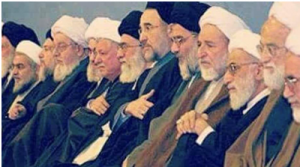 Year 1979
Year 1979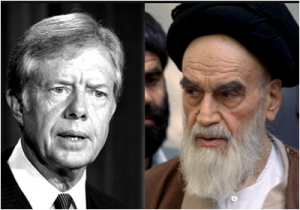 Why Did Iran’s Revolution Succeed?
Why Did Iran’s Revolution Succeed?
 Speaking of which, this very week I have wondered if the
Speaking of which, this very week I have wondered if the  My own impressions were that the helter-skelter reminded me of the image of the Tower of Babel, and the foolishness of a materialistic attempt to reach God. I wondered why the people who had thought up the idea could not see the circus elephant in the room so to speak, and was I really a killjoy and taking the whole thing far too seriously?
My own impressions were that the helter-skelter reminded me of the image of the Tower of Babel, and the foolishness of a materialistic attempt to reach God. I wondered why the people who had thought up the idea could not see the circus elephant in the room so to speak, and was I really a killjoy and taking the whole thing far too seriously? Many people do of course know that God has seen everything before, inside and outside of a church building, but many people just did not understand why a man who is meant to represent God would think God would be ‘happy’ or accepting of the showing of sexually explicit films in a cathedral where blood sweat and tears have been spilt to build it, and where holiness (not piety) should really be the priority conveyed from within its walls.
Many people do of course know that God has seen everything before, inside and outside of a church building, but many people just did not understand why a man who is meant to represent God would think God would be ‘happy’ or accepting of the showing of sexually explicit films in a cathedral where blood sweat and tears have been spilt to build it, and where holiness (not piety) should really be the priority conveyed from within its walls. United States, Mexico, Canada (USMCA)
United States, Mexico, Canada (USMCA) Big Pharma
Big Pharma By NWV Senior Political News Writer, Jim Kouri
By NWV Senior Political News Writer, Jim Kouri By releasing a previously deported alien facing serious criminal charges, Mecklenburg County chose to release a serious public safety threat onto the streets of Charlotte where he was free to potentially harm others for nearly two months until his capture by ICE.
By releasing a previously deported alien facing serious criminal charges, Mecklenburg County chose to release a serious public safety threat onto the streets of Charlotte where he was free to potentially harm others for nearly two months until his capture by ICE.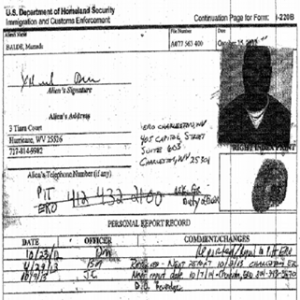 ICE’s Charlotte Fugitive Operations Team (FUGOPS) located and arrested the man without incident August 9 and he remains in ICE custody.
ICE’s Charlotte Fugitive Operations Team (FUGOPS) located and arrested the man without incident August 9 and he remains in ICE custody. Edwin Vieira
Edwin Vieira Bill Clinton who never saw an empty dress he didn’t like, has a strange track record with both documented sexual assaults and vanishing acts of former associates who are later found dead. Clinton stated that he only began socializing with Epstein in 2002. Since this is 2019, that means they have been socializing for 17 years. One can get to know someone pretty well in 17 years, but Clinton pontificates that is was only a short time. He said he only took about four flights on the Lolita Express. That is four too many. Why did he take those? Those planes picked up men from all over the world to dispatch them to this kiddy sex nest. But Clinton said that this is no big deal. Sure. But this is what made pervert Jeffrey Epstein a billionaire.There is a lot of money in sex trafficking.
Bill Clinton who never saw an empty dress he didn’t like, has a strange track record with both documented sexual assaults and vanishing acts of former associates who are later found dead. Clinton stated that he only began socializing with Epstein in 2002. Since this is 2019, that means they have been socializing for 17 years. One can get to know someone pretty well in 17 years, but Clinton pontificates that is was only a short time. He said he only took about four flights on the Lolita Express. That is four too many. Why did he take those? Those planes picked up men from all over the world to dispatch them to this kiddy sex nest. But Clinton said that this is no big deal. Sure. But this is what made pervert Jeffrey Epstein a billionaire.There is a lot of money in sex trafficking. Remember good ole boy Johnny Edwards––actually North Carolina Democrat Senator John Edwards (1998-2012), VP candidate in 2004, and presidential candidate in 2008? Edwards is hard to forget because he burst upon the national stage as the golden-tongued lawyer who was famous for defending the rights of the unborn.
Remember good ole boy Johnny Edwards––actually North Carolina Democrat Senator John Edwards (1998-2012), VP candidate in 2004, and presidential candidate in 2008? Edwards is hard to forget because he burst upon the national stage as the golden-tongued lawyer who was famous for defending the rights of the unborn. That’s right, a law that gave the right to a mother––exhausted by labor and in pain––to decide to snuff out the life of her fully-developed, perfectly intact full-term baby.
That’s right, a law that gave the right to a mother––exhausted by labor and in pain––to decide to snuff out the life of her fully-developed, perfectly intact full-term baby.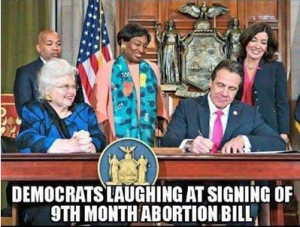 And fake news calls Republicans racist! Typical projection––accusing your competition of what you yourself are guilty of!
And fake news calls Republicans racist! Typical projection––accusing your competition of what you yourself are guilty of!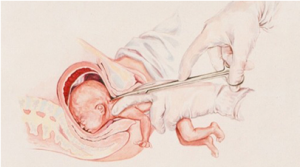 Democrat depravity marches on!
Democrat depravity marches on!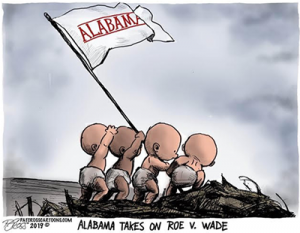 Betsy McCaughey, former Lt. Gov. of New York, public policy expert, and prolific writer,
Betsy McCaughey, former Lt. Gov. of New York, public policy expert, and prolific writer,  One of our readers wrote: “Those of us who grew up in the 1940’s and 1950’s are well aware that we grew up in an America much different from the America of today. It is truly sad how we, and our parents, allowed the government to gain so much power at the expense of our liberty and freedom. Once we allowed the government to require a license to exercise any of our rights, that right became a privilege and the freedom was gone.”
One of our readers wrote: “Those of us who grew up in the 1940’s and 1950’s are well aware that we grew up in an America much different from the America of today. It is truly sad how we, and our parents, allowed the government to gain so much power at the expense of our liberty and freedom. Once we allowed the government to require a license to exercise any of our rights, that right became a privilege and the freedom was gone.” Republican and Democratic US officials back the MEK against the government in Iran [Reuters]
Republican and Democratic US officials back the MEK against the government in Iran [Reuters] Houston, we have a problem. The MEK cult was listed as a terrorist group in the US until 2012 – but its opposition to Tehran has attracted the backing of John Bolton, Rudy Giuliani and others bent on regime change.
Houston, we have a problem. The MEK cult was listed as a terrorist group in the US until 2012 – but its opposition to Tehran has attracted the backing of John Bolton, Rudy Giuliani and others bent on regime change. “The best wakeup call is Islamic State to get victory or another 911,” according to one of Mohamed’s emails with an undercover agent. Hussein wrote that he wanted to blow up the White House and Tucson if anyone tries to stop him. Both men disclosed that they strived to be the most wanted terrorists in the world.
“The best wakeup call is Islamic State to get victory or another 911,” according to one of Mohamed’s emails with an undercover agent. Hussein wrote that he wanted to blow up the White House and Tucson if anyone tries to stop him. Both men disclosed that they strived to be the most wanted terrorists in the world. In a similar case out of Tucson last fall, an Ethiopian man granted refugee status by the Obama administration was later discovered to be a terrorist who lied to the government about his identity.
In a similar case out of Tucson last fall, an Ethiopian man granted refugee status by the Obama administration was later discovered to be a terrorist who lied to the government about his identity. Red Flag Laws
Red Flag Laws (Kayaker battling whitewater in Clear Creek, Golden, CO) Photo by Frosty Wooldridge
(Kayaker battling whitewater in Clear Creek, Golden, CO) Photo by Frosty Wooldridge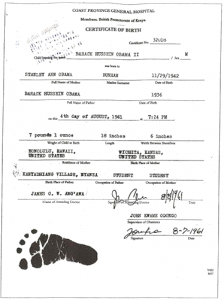 This writer had gone into the newspaper archives and found the birth certificate. I was to check back to make a copy of that document. By the time I did, within a day, that certificate had been scrubbed so nobody could see it. I kicked myself through three states, being mad at myself for not copying it immediately. The second line at the top of the certificate does show that he was born in Kenya, not the U.S. Obama is such a phony that he is not even fully black. He had a white mother.
This writer had gone into the newspaper archives and found the birth certificate. I was to check back to make a copy of that document. By the time I did, within a day, that certificate had been scrubbed so nobody could see it. I kicked myself through three states, being mad at myself for not copying it immediately. The second line at the top of the certificate does show that he was born in Kenya, not the U.S. Obama is such a phony that he is not even fully black. He had a white mother. In 2015, a completely overlooked communist revolution took place. The Himalayan nation of Nepal was taken over by the Communist Party via a popular election but only after the communists had ravaged the country in a bitter civil war and thereby gained physical control of 80% of rural Nepal. This sent shock waves through the region because Nepal had long been aligned with pro-Western India. In 2018, Nepal refused to participate in annual South Asian military exercises aimed at combating terrorism in the region. Instead, Nepal announced it would participate in joint military exercises with China. In June 2018, China and Nepal announced a deal for construction of a new railway link from Chinese Tibet all the way to the Nepalese capital of Kathmandu, a distance of almost 400 miles.This project is part of China’s ambitious “Belt and Road” initiative to construct infrastructure all across Eurasia and even overseas, ostensibly to link China, with its vast markets, to the rest of the world.
In 2015, a completely overlooked communist revolution took place. The Himalayan nation of Nepal was taken over by the Communist Party via a popular election but only after the communists had ravaged the country in a bitter civil war and thereby gained physical control of 80% of rural Nepal. This sent shock waves through the region because Nepal had long been aligned with pro-Western India. In 2018, Nepal refused to participate in annual South Asian military exercises aimed at combating terrorism in the region. Instead, Nepal announced it would participate in joint military exercises with China. In June 2018, China and Nepal announced a deal for construction of a new railway link from Chinese Tibet all the way to the Nepalese capital of Kathmandu, a distance of almost 400 miles.This project is part of China’s ambitious “Belt and Road” initiative to construct infrastructure all across Eurasia and even overseas, ostensibly to link China, with its vast markets, to the rest of the world.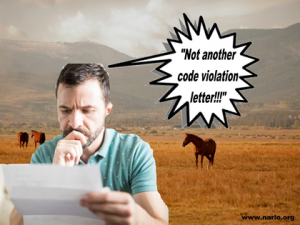 Row after row, shelf after shelf and volume after volume, of law, after law, after law, fills the libraries in Washington DC and in major libraries across America. We are a country under the rule of law all right, but we have taken law and rule making to the extreme edge of absurdity, if not insanity.
Row after row, shelf after shelf and volume after volume, of law, after law, after law, fills the libraries in Washington DC and in major libraries across America. We are a country under the rule of law all right, but we have taken law and rule making to the extreme edge of absurdity, if not insanity. I have always loved dogs. It is said, “Never attribute to malice that which can be adequately explained by stupidity.” Is there a saying for a case when both stupidity and malice team up together? I remember a gang of Muslim kids who tried to attack the street dogs. I was young and terrified. The gang managed to get a hold of a piece of meat from a nearby butcher shop as the bait. Bait for whom? The moment of truth arrived. I watched the unfolding drama from a distance with tremendous anticipation.
I have always loved dogs. It is said, “Never attribute to malice that which can be adequately explained by stupidity.” Is there a saying for a case when both stupidity and malice team up together? I remember a gang of Muslim kids who tried to attack the street dogs. I was young and terrified. The gang managed to get a hold of a piece of meat from a nearby butcher shop as the bait. Bait for whom? The moment of truth arrived. I watched the unfolding drama from a distance with tremendous anticipation.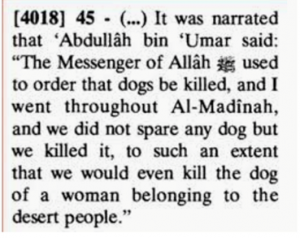 Fanatical Muslims hate, literally hate, dogs. You might wonder why, since all dogs are considered man’s best friend by non-Muslims. And dogs have earned that privileged designation by their service as well as their devotion to people. Dogs have helped hunters, stood watch as hunters slept, and supplied people with an abundance of love. Why, then, single them out as deserving of hatred and even slaughter? It makes no sense.
Fanatical Muslims hate, literally hate, dogs. You might wonder why, since all dogs are considered man’s best friend by non-Muslims. And dogs have earned that privileged designation by their service as well as their devotion to people. Dogs have helped hunters, stood watch as hunters slept, and supplied people with an abundance of love. Why, then, single them out as deserving of hatred and even slaughter? It makes no sense. Braying asses:
Braying asses: The fourth member of the jihadi squad is Ayanna Pressley. This jihadi Jane was born in Chicago in 1974 where her mother was a tenants’ rights advocate with the
The fourth member of the jihadi squad is Ayanna Pressley. This jihadi Jane was born in Chicago in 1974 where her mother was a tenants’ rights advocate with the  Campaign Funding
Campaign Funding What jihadi Jane Pressler doesn’t mention is the inconvenient truth of “
What jihadi Jane Pressler doesn’t mention is the inconvenient truth of “ Conclusion
Conclusion (Bicycling the Continental Divide, 2,500 miles, 150,000 vertical feet of climbing, 19 passes.)
(Bicycling the Continental Divide, 2,500 miles, 150,000 vertical feet of climbing, 19 passes.) Figure 1 illustrates IPCC’s 4 bins for human CO2.
Figure 1 illustrates IPCC’s 4 bins for human CO2. “Strong indicators are demonstrating these hostile and terrorist groups have no intention of arriving in America for a better life, but to join already existing such elements as reinforcements. U.S. Border Patrol Agents are performing above and beyond the call of duty in the most exceptional and professional manner,” noted Rapacki’s report obtained by the National Association of Chiefs of Police’s researcher Jim Kouri.
“Strong indicators are demonstrating these hostile and terrorist groups have no intention of arriving in America for a better life, but to join already existing such elements as reinforcements. U.S. Border Patrol Agents are performing above and beyond the call of duty in the most exceptional and professional manner,” noted Rapacki’s report obtained by the National Association of Chiefs of Police’s researcher Jim Kouri. The security program will expand over the next five years guided by a philosophy of evolutionary rather than revolutionary change. It is assuming an oversight role in the management of security programs that were previously controlled by the field offices and the FBI Headquarters’ divisions. The FBI recognizes that all security threats, vulnerabilities, and risks must be identified, assessed, evaluated, and managed using a systematic and rational process as part of a continuing operational strategy.
The security program will expand over the next five years guided by a philosophy of evolutionary rather than revolutionary change. It is assuming an oversight role in the management of security programs that were previously controlled by the field offices and the FBI Headquarters’ divisions. The FBI recognizes that all security threats, vulnerabilities, and risks must be identified, assessed, evaluated, and managed using a systematic and rational process as part of a continuing operational strategy. All throughout our long and tortured 5,000-year history of civilization, bullies have arisen from time to time to dominate the common folk. Actually, there have been tens of thousands of bullies, large and small, on all continents, save one. There seems to be an innate character in some men and some women for that matter, that require they control others, either as single individuals, small groups, or entire countries and cultures. Equally, all throughout our history of civilization, we have been forced to put the bullies down, one by one, long after they have inflicted terror, cultural disruptions, property damage and grave wounds or massive deaths on the hapless and supposedly helpless population. Unfortunately, the biggest problem we have is that we wait far too long before action is taken to relieve the bullies of their power, or their lives. We are far too tolerant of their growing power and negligently blind to their ambitions. History has proven, the longer we wait, the tougher the job.
All throughout our long and tortured 5,000-year history of civilization, bullies have arisen from time to time to dominate the common folk. Actually, there have been tens of thousands of bullies, large and small, on all continents, save one. There seems to be an innate character in some men and some women for that matter, that require they control others, either as single individuals, small groups, or entire countries and cultures. Equally, all throughout our history of civilization, we have been forced to put the bullies down, one by one, long after they have inflicted terror, cultural disruptions, property damage and grave wounds or massive deaths on the hapless and supposedly helpless population. Unfortunately, the biggest problem we have is that we wait far too long before action is taken to relieve the bullies of their power, or their lives. We are far too tolerant of their growing power and negligently blind to their ambitions. History has proven, the longer we wait, the tougher the job.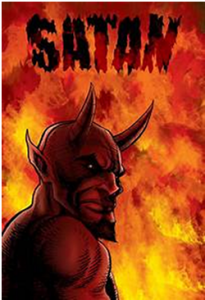 These massacres are pure evil and we are to seek a spiritual, not political, solution. Observe info below, then determine if joining Satan is a wise choice. Here are the offerings:
These massacres are pure evil and we are to seek a spiritual, not political, solution. Observe info below, then determine if joining Satan is a wise choice. Here are the offerings: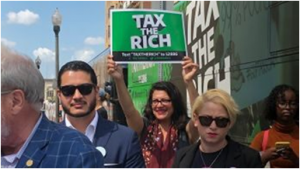 Rashida Tlaib
Rashida Tlaib Accompanying Tlaib during her swearing-in ceremony was activist and fellow Palestinian BDS backer Linda Sarsour. Sarsour is best known as one of the leaders of the
Accompanying Tlaib during her swearing-in ceremony was activist and fellow Palestinian BDS backer Linda Sarsour. Sarsour is best known as one of the leaders of the  Let’s cut to the chase: “True Muslims” are those who strap explosive vests and detonate themselves in a crowd of what they consider fake or deviant Muslims. They also bomb each other at mosques, funeral processions and marketplaces packed with women and children. All in service to promote true Islam and cleanse Allah’s earth from kefirs as they are repeatedly and emphatically instructed to do in the Quran.
Let’s cut to the chase: “True Muslims” are those who strap explosive vests and detonate themselves in a crowd of what they consider fake or deviant Muslims. They also bomb each other at mosques, funeral processions and marketplaces packed with women and children. All in service to promote true Islam and cleanse Allah’s earth from kefirs as they are repeatedly and emphatically instructed to do in the Quran. They love death and happily embrace it because of what they have been brainwashed to believe is awaiting them as a reward. Death in carrying out the work of Islam earns them entry into Allah’s eternal sensuous male paradise, so they believe. It is in keeping with propagating this fraud of afterlife paradise that portraits and names of Muslim killers, glorified as martyrs, which festoon the length and breadth of Muslim cradles of Islamism such as Iran and Saudi Arabia. To the wild-eyed robot jihadist even a day on this “heap of dirt” earth is simply another day of unbearable delay from winging their way to the lasting abode of lust.
They love death and happily embrace it because of what they have been brainwashed to believe is awaiting them as a reward. Death in carrying out the work of Islam earns them entry into Allah’s eternal sensuous male paradise, so they believe. It is in keeping with propagating this fraud of afterlife paradise that portraits and names of Muslim killers, glorified as martyrs, which festoon the length and breadth of Muslim cradles of Islamism such as Iran and Saudi Arabia. To the wild-eyed robot jihadist even a day on this “heap of dirt” earth is simply another day of unbearable delay from winging their way to the lasting abode of lust. This is not a hypothetical prognostication. The capitulation of cultural Muslims has already played out in many parts of European towns and cities. It is worth repeating that as Islamists wage their war under the banner of Islam, they receive immense direct and indirect support from the rank-and-file of cultural Muslims. Their support is the life-blood that keeps Islamists alive.
This is not a hypothetical prognostication. The capitulation of cultural Muslims has already played out in many parts of European towns and cities. It is worth repeating that as Islamists wage their war under the banner of Islam, they receive immense direct and indirect support from the rank-and-file of cultural Muslims. Their support is the life-blood that keeps Islamists alive. In Richmond, Virginia this morning, a panel of three judges from the U.S. Court of Appeals for the Fourth Circuit
In Richmond, Virginia this morning, a panel of three judges from the U.S. Court of Appeals for the Fourth Circuit  Maryland Attorney General Brian Frosh and District of Columbia Attorney General Karl Racine believed — or so they claimed — that Trump violated the law. In the midst of the Special Counsel Robert Mueller’s dog & pony show, the two Attorneys General filed a lawsuit against both the Trump Business Organization and against President Trump the government official.
Maryland Attorney General Brian Frosh and District of Columbia Attorney General Karl Racine believed — or so they claimed — that Trump violated the law. In the midst of the Special Counsel Robert Mueller’s dog & pony show, the two Attorneys General filed a lawsuit against both the Trump Business Organization and against President Trump the government official. The decision was rendered, moreover, “
The decision was rendered, moreover, “ “Democrat Ilhan Omar (right) and House Speaker Nancy Pelosi (left) were pictured walking through the ‘Door of No Return’ where millions of Africans were shipped into a life of slavery in the United States.”
“Democrat Ilhan Omar (right) and House Speaker Nancy Pelosi (left) were pictured walking through the ‘Door of No Return’ where millions of Africans were shipped into a life of slavery in the United States.” “Their African guide admits that “this history is difficult to tell and hard to believe” but pulls no punches about African complicity in kidnapping and selling millions of African people: “All the tribes were involved in the slave trade—no exemptions.” The African-Americans were staggered: “So we really can’t blame the Europeans,” one declares, “We sold our own. It takes two.” Another visitor declares, “That’s right—money and greed.” The program concludes that “white guilt can never be erased”—but cautions that it is also important to remember that “black participation lets no one off the hook.” The entire piece is well worth the time to read. Now, who should be paying reparations?
“Their African guide admits that “this history is difficult to tell and hard to believe” but pulls no punches about African complicity in kidnapping and selling millions of African people: “All the tribes were involved in the slave trade—no exemptions.” The African-Americans were staggered: “So we really can’t blame the Europeans,” one declares, “We sold our own. It takes two.” Another visitor declares, “That’s right—money and greed.” The program concludes that “white guilt can never be erased”—but cautions that it is also important to remember that “black participation lets no one off the hook.” The entire piece is well worth the time to read. Now, who should be paying reparations? Owning another human being and the era of slavery in this country IS horribly shameful but I had nothing to do with it nor would I have gone along with it back then. No way. Yet, I am considered a racist simply because I was born Caucasian.
Owning another human being and the era of slavery in this country IS horribly shameful but I had nothing to do with it nor would I have gone along with it back then. No way. Yet, I am considered a racist simply because I was born Caucasian. Dr. Johnson is a devout Christian man. Very smart, funny and actually listens to you. A great doctor. If I were a racist would I have a doctor whose skin color is black? Eat that Trump-haters.
Dr. Johnson is a devout Christian man. Very smart, funny and actually listens to you. A great doctor. If I were a racist would I have a doctor whose skin color is black? Eat that Trump-haters. Congress shall have power to lay and collect taxes, duties, imposts and excises, to pay the debts and provide for the common defense and general welfare of the United States; but all duties, imposts and excises shall be uniform throughout the United States;
Congress shall have power to lay and collect taxes, duties, imposts and excises, to pay the debts and provide for the common defense and general welfare of the United States; but all duties, imposts and excises shall be uniform throughout the United States; Why do Americans think we’re close to $23 TRILLION unpayable dollars in debt? Because the U.S. Congress – those reps and senators who voted to ‘give’ $16 BILLION BORROWED dollars for local problems in the City of Baltimore did so in violation of their oath of office.
Why do Americans think we’re close to $23 TRILLION unpayable dollars in debt? Because the U.S. Congress – those reps and senators who voted to ‘give’ $16 BILLION BORROWED dollars for local problems in the City of Baltimore did so in violation of their oath of office. But you know what? It all starts at home with mom and dad. Not mom sucking on a crack pipe or dad (if one can even be found) hanging on the street corner wearing jeans so low you can see his butt-crack. Hanging with other illiterates either doing or dealing drugs or drunks.
But you know what? It all starts at home with mom and dad. Not mom sucking on a crack pipe or dad (if one can even be found) hanging on the street corner wearing jeans so low you can see his butt-crack. Hanging with other illiterates either doing or dealing drugs or drunks. So her son went on to become a fine man, a world re-nouned neurosurgeon.
So her son went on to become a fine man, a world re-nouned neurosurgeon.  (Light shining through the redwoods along Avenue of the Giants, CA.)
(Light shining through the redwoods along Avenue of the Giants, CA.) * Tell yourself each day, “Life is good.” Think primal, pure fountain, universal source and energy. Remember your childhood when you played for the sheer joy of movement. Re-introduce “play” into your daily schedule. A walk along a trail, a quiet moment in your rocker, a swing in the park and bird watching by a pond. Take delight in a dragonfly landing on a Lilly pad. Walk away from the dark night of the soul or anything bothering you—by your intellectual choice through practice. Think of the good.
* Tell yourself each day, “Life is good.” Think primal, pure fountain, universal source and energy. Remember your childhood when you played for the sheer joy of movement. Re-introduce “play” into your daily schedule. A walk along a trail, a quiet moment in your rocker, a swing in the park and bird watching by a pond. Take delight in a dragonfly landing on a Lilly pad. Walk away from the dark night of the soul or anything bothering you—by your intellectual choice through practice. Think of the good. On May 17, 2019, U.S. Custom and Border Protection (CBP) and U.S. Immigration and Customs Enforcement (ICE) provided the Committee with internal data and analyses showing that hundreds of migrants approaching the southern border have criminal histories.
On May 17, 2019, U.S. Custom and Border Protection (CBP) and U.S. Immigration and Customs Enforcement (ICE) provided the Committee with internal data and analyses showing that hundreds of migrants approaching the southern border have criminal histories.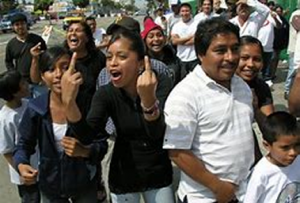 The letter noted that two weeks ago U.S. Border Patrol Chief Carla Provost told the Senate Judiciary Subcommittee on Border Security and Immigration that, “as of March 31, 2019, 361,087 migrants have been apprehended between the points of entry (POEs) in Fiscal Year (FY) 2019, representing a 108 percent increase over the same time in FY 2018.”
The letter noted that two weeks ago U.S. Border Patrol Chief Carla Provost told the Senate Judiciary Subcommittee on Border Security and Immigration that, “as of March 31, 2019, 361,087 migrants have been apprehended between the points of entry (POEs) in Fiscal Year (FY) 2019, representing a 108 percent increase over the same time in FY 2018.”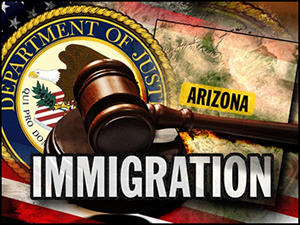 The pro-bono case filed by attorneys from the Southern Poverty Law Center (SPLC) claims that Immigration and Customs Enforcement (ICE) agents violated their constitutional rights against illegal seizures and to equal protection under the Fourth and Fifth Amendments to the U.S. Constitution.
The pro-bono case filed by attorneys from the Southern Poverty Law Center (SPLC) claims that Immigration and Customs Enforcement (ICE) agents violated their constitutional rights against illegal seizures and to equal protection under the Fourth and Fifth Amendments to the U.S. Constitution. None of the four jihadi Janes represent our Republic. They are dangerous zealots.
None of the four jihadi Janes represent our Republic. They are dangerous zealots. The only Omar photo without her hijab is a mugshot after being
The only Omar photo without her hijab is a mugshot after being  Ilhan’s Father, Top Propagandist in Somalia
Ilhan’s Father, Top Propagandist in Somalia Omar interpreted for her grandfather, a Siad Barre servant, at political meetings. In high school, she became active in student politics. From there, the Red-Green Axis import from Somalia, put down her own political roots, became a community organizer, and laid her path to the United States Congress. Upon taking office in the U.S. House, she promptly joined the
Omar interpreted for her grandfather, a Siad Barre servant, at political meetings. In high school, she became active in student politics. From there, the Red-Green Axis import from Somalia, put down her own political roots, became a community organizer, and laid her path to the United States Congress. Upon taking office in the U.S. House, she promptly joined the